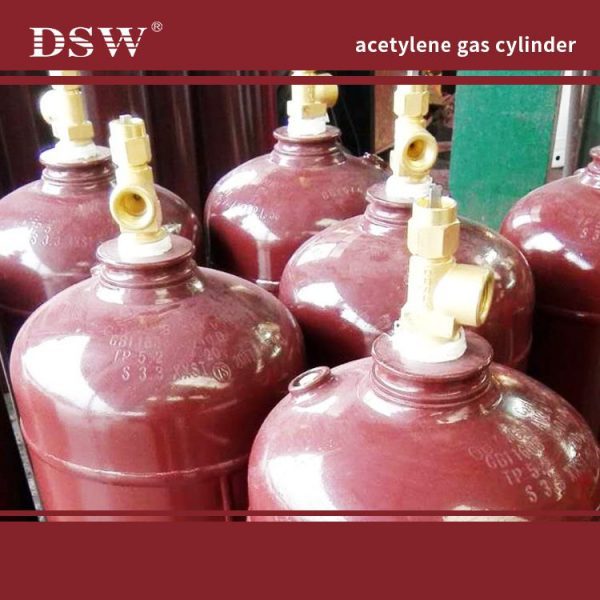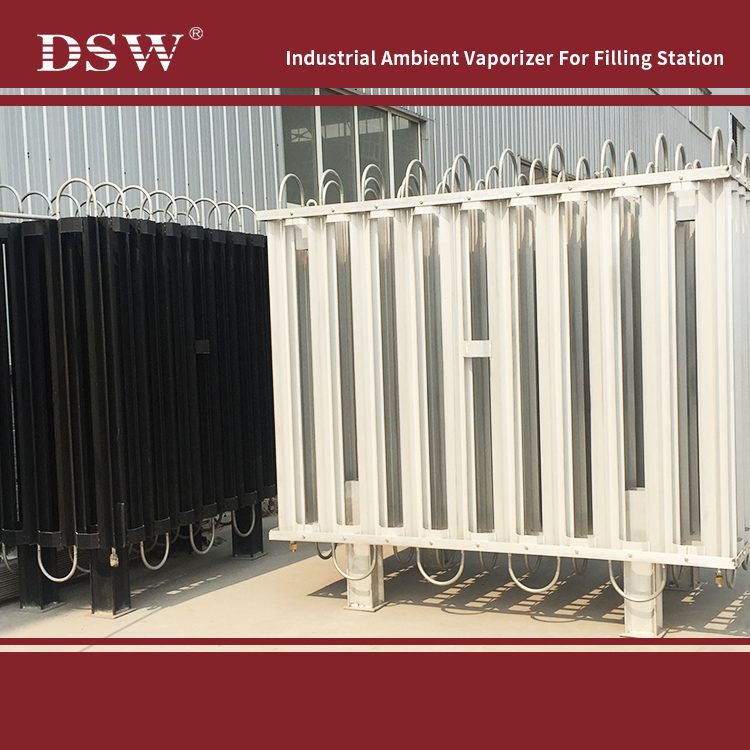Ambient Vaporizer supplier in china
DSW industry offers a variety of ambient air vaporizers for LIN-LOX-LAR-LNG and LCO2 applications.
Ambient Vaporizers are relatively uncomplicated heat exchangers that vaporize liquified gas using heat absorbed from the ambient air. It is in operation in a wide range of applications throughout the industry.
What is a cryogenic vaporizer?
Cryogenic vaporizers, relatively simple heat exchangers, vaporize liquid gases using heat from ambient air.
The simple operating principle means that these vaporizers don’t require external power.
Liquid gas passes through several interconnected tubes in various series and parallel paths.
High-performance ambient vaporizers offer zero-cost heating of various liquid gases and cryogens, from plant cooling water, river water, or closed loop water/glycol systems to provide zero-cost vaporization of cryogenic fluids.
Circulating Water Vaporizers may also be used to vaporize cryogenic fluids.
Ambient Vaporizers Technical Data
| Item Number | Working Medium | Design Pressure ( Mpa) | Working Pressure (Mpa) | Design Temperature | Heat Exchange Area |
| AV50/3.0 | Liquid Oxygen, Liquid Argon, Liquid Nitrogen | 3.3 | 3.0 | -196 to 50 degree | 12.5m2 |
STANDARD FEATURES of Vaporizers
Aluminum or stainless steel fluid passages
Design pressure to 10,000 PSIG
Capacities to 50,000 SCFH in single assemblies
Manifold designs to suit pressure drop specifications
Removable legs
MPT in/out connections


DSW™ ambient vaporizers have become the industry standard, and Supergap vaporizers use natural convection of air to vaporize liquefied gases

Types of Air Vaporizer
The function is the cornerstone of all types of vaporizers. Vaporizers typically serve one of two primary purposes: producing vapor or transferring heat.
Vaporizers designed exclusively to create vapor from liquid streams are utilized in numerous applications.
Propane vaporizers, for instance, are designed to turn liquid propane (lp) into gas that can then be fed into equipment that uses propane gas as fuel.
Horizontal electric vaporizers offer similar functionality.
Vaporizers can be beneficial in cold environments where natural vaporization from storage alone is insufficient or in systems with very high vapor requirements.
Vaporizers can also be used with other fuels like gasoline and kerosene for applications like fuel injection in engines.
Cryogenic applications often utilize this equipment, superheating or vaporizing low-temperature fluids (between -280 and -420 degF) like liquefied natural gas and liquid nitrogen;
or simply for creating steam or other hot gases by heating liquid feeds.
Vaporizers can also serve as heat transfer devices by using heat transfer fluids and refrigerants in their vapor form for easier heat exchange with lower pressure heat exchange rates and improved temperature uniformity. These units often feature shell and tube heat exchangers to distribute vaporized fluid inside or outside tubes for enhanced temperature uniformity; heat exchange vaporizers may use either single-component heat transfer fluids or multi-component versions as heat transfer fluids.

Heat Source
Vaporizers can be distinguished based on the heating source for the vaporized fluid.
Ambient vaporizers channel heat from the surrounding air to vaporize cryogenic and other low temperature liquids.
Water bath vaporizerSteam vaporizerElectric vaporizers use electrically powered resistance heating coils or electrode-type surfaces to transfer heat for vaporization.
Hot water vaporizers (water bath vaporizers; circulating hot-water vaporizers) use pre-heated water or another hot liquid as the heat source for vaporization. This allows for more precise temperature control.
Radiant heat vaporizers utilize radiant energy from combustion or other heat source as an alternative to convection or conduction heating.
Steam vaporizers use pre-heated steam or another hot gas as the heat source for vaporization. This allows for more precise temperature control and more efficient heat transfer to the boiling liquid.
I want to purchase vaporizers. What data should I provide, and what vendor should I declare?
BS EN 1473 stated values to be specified for LNG vaporizers. As for ambient air vaporizers, they are:
- Minimum and maximum throughput
- Minimum outlet temperature vaporized gas
- LNG/NG pressure drop
- Minimum air temperature, wind speed, and humidity
- Battery limit condition for utility
- For LNG –> heating curves, thermal duty, inlet and outlet temperature, inlet, and outlet pressure, composition, and mass flow rate
















